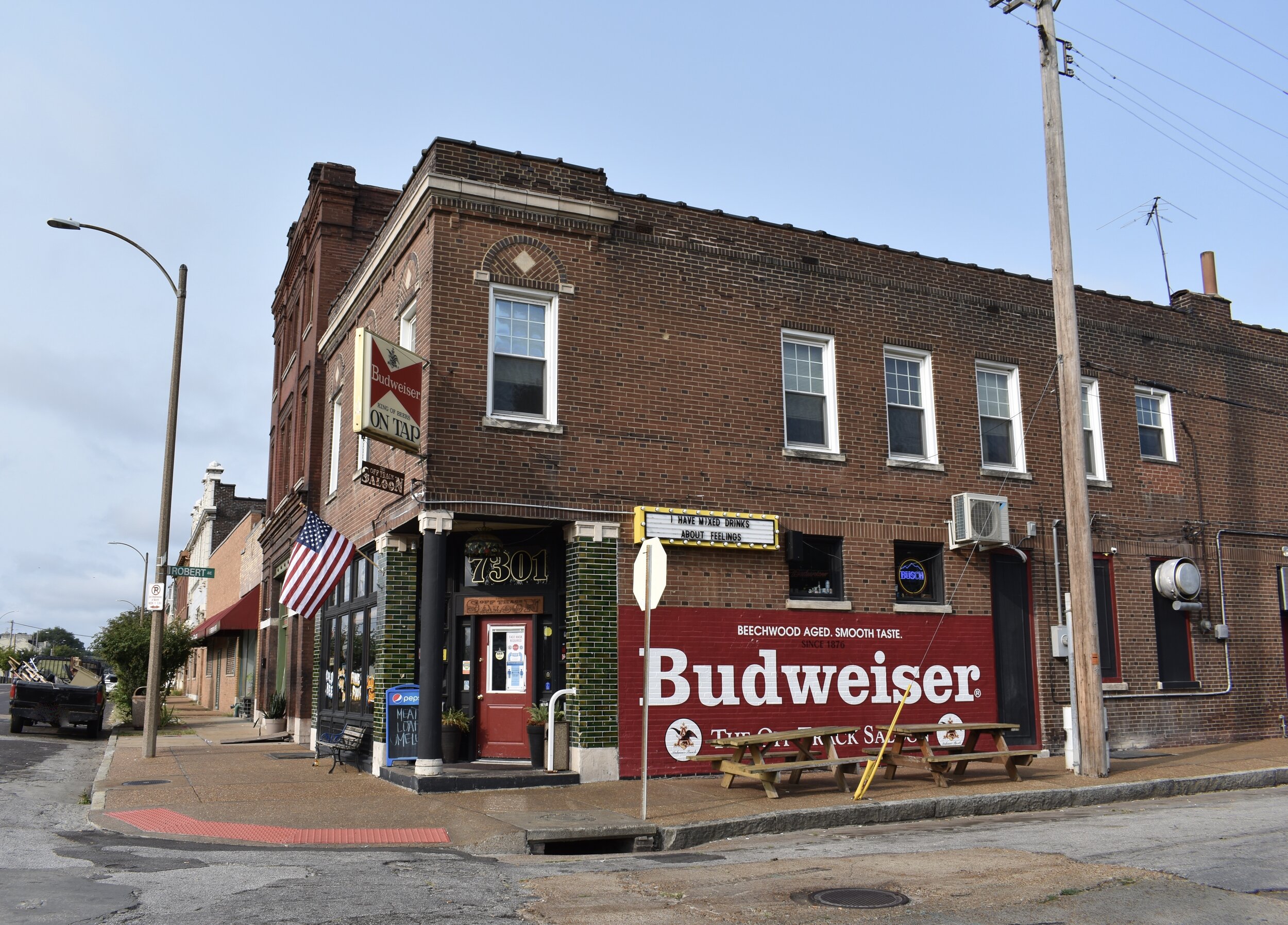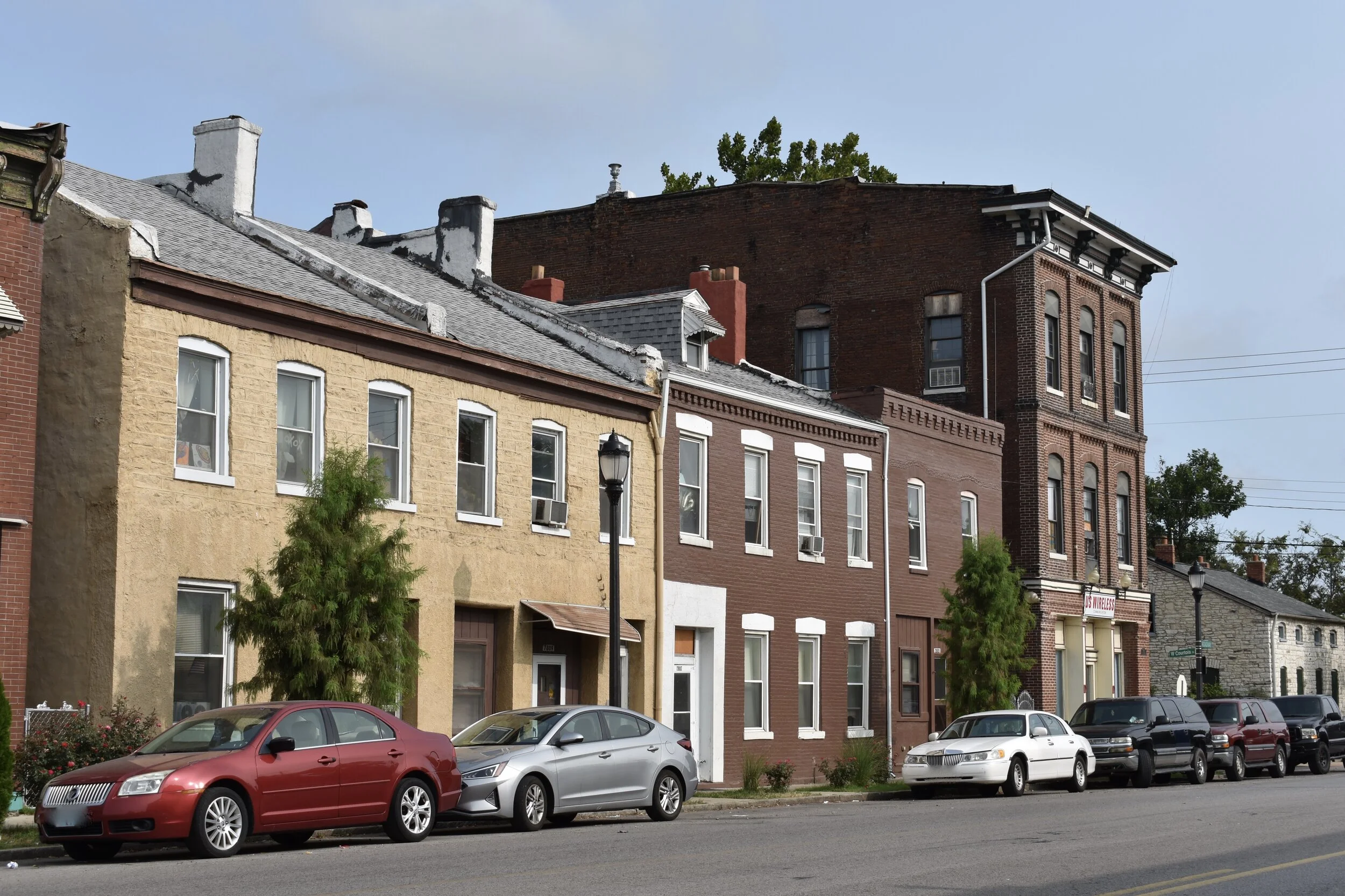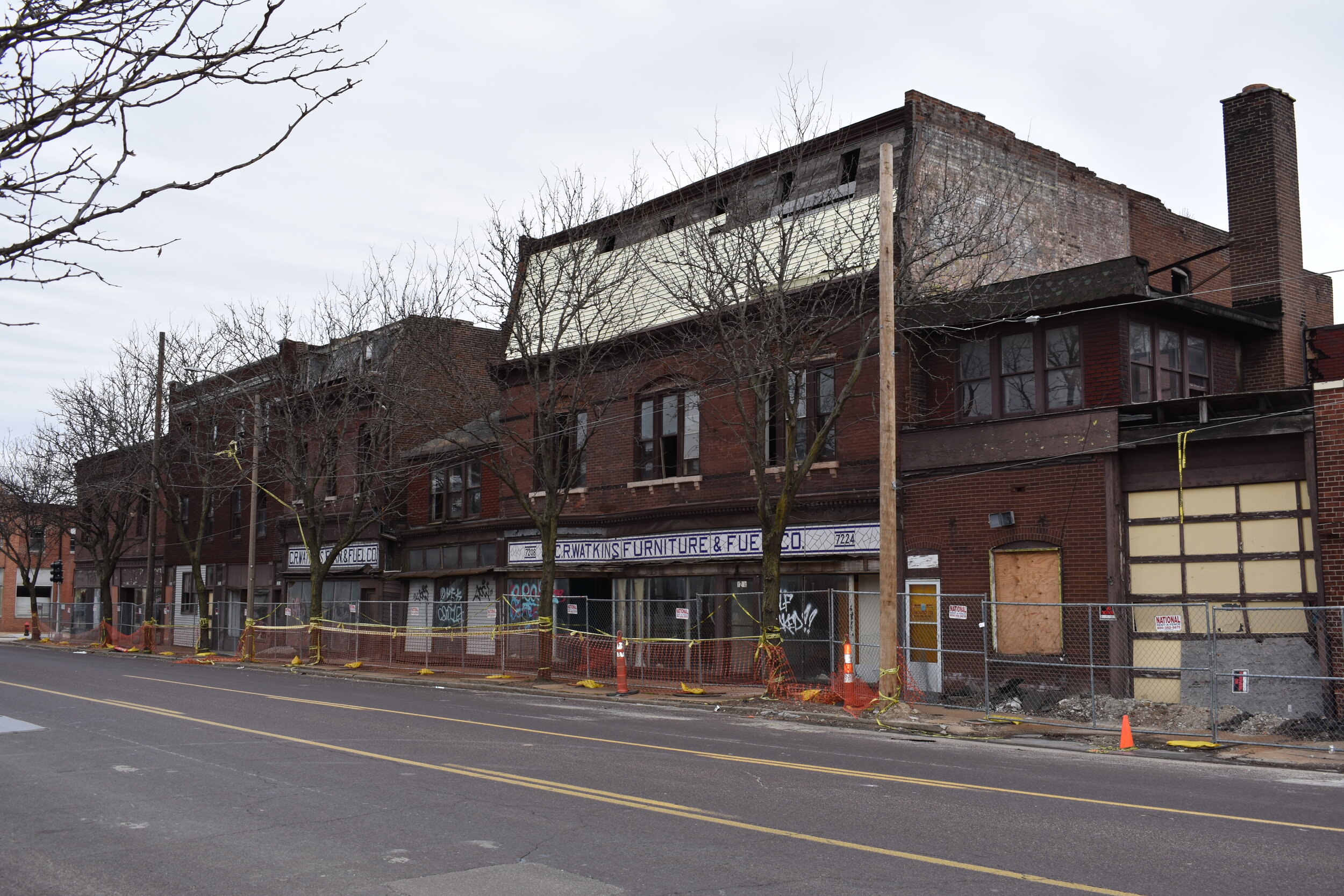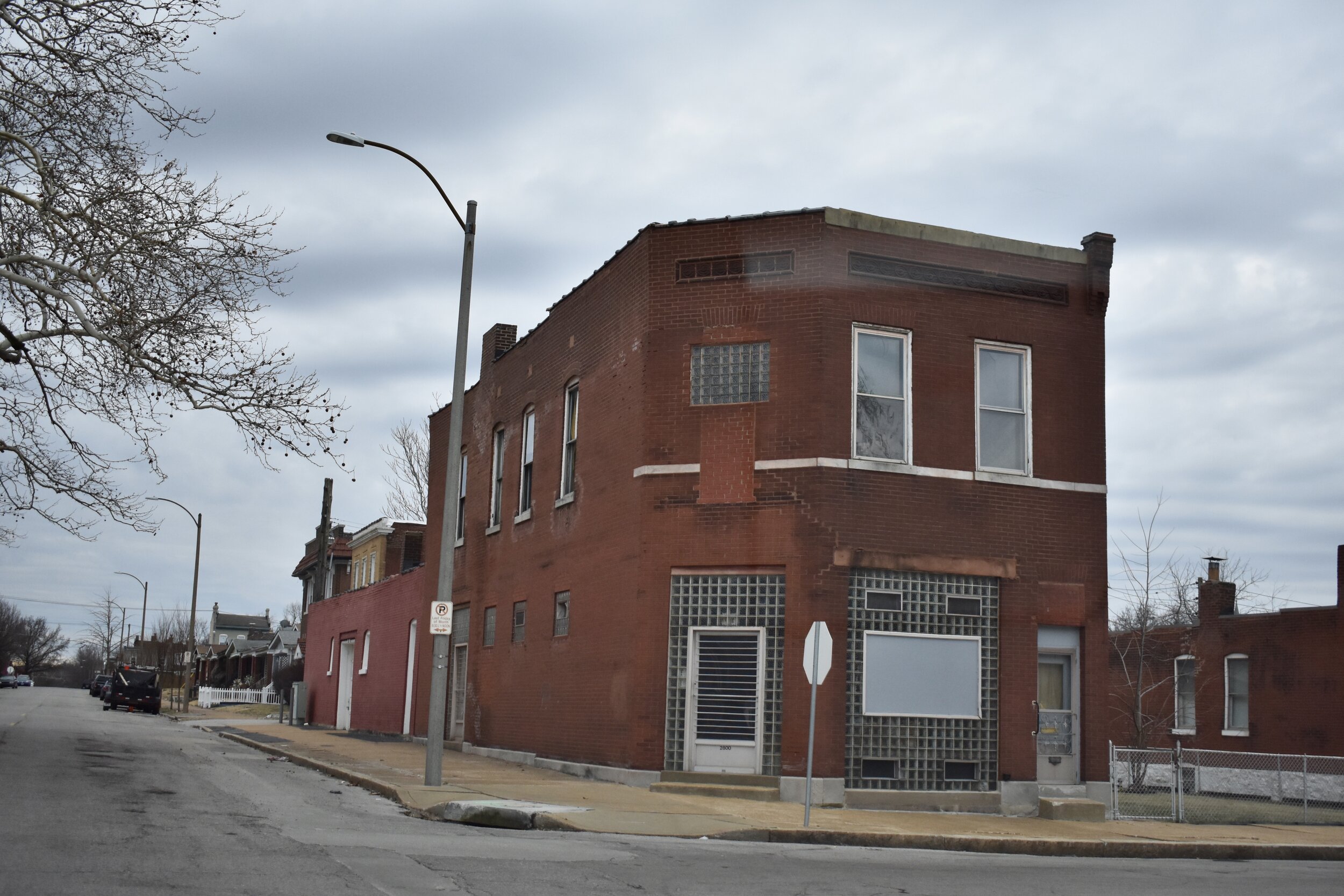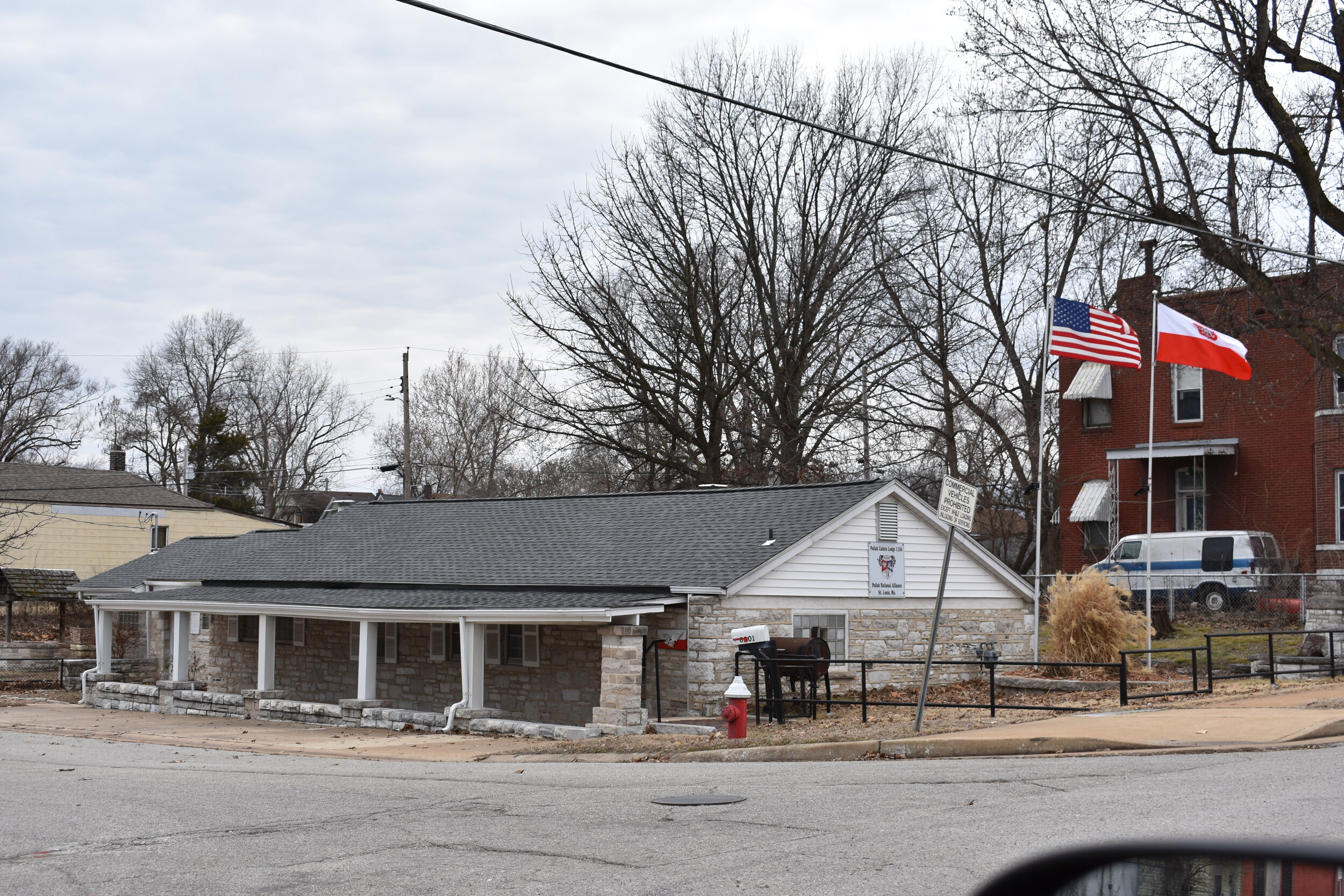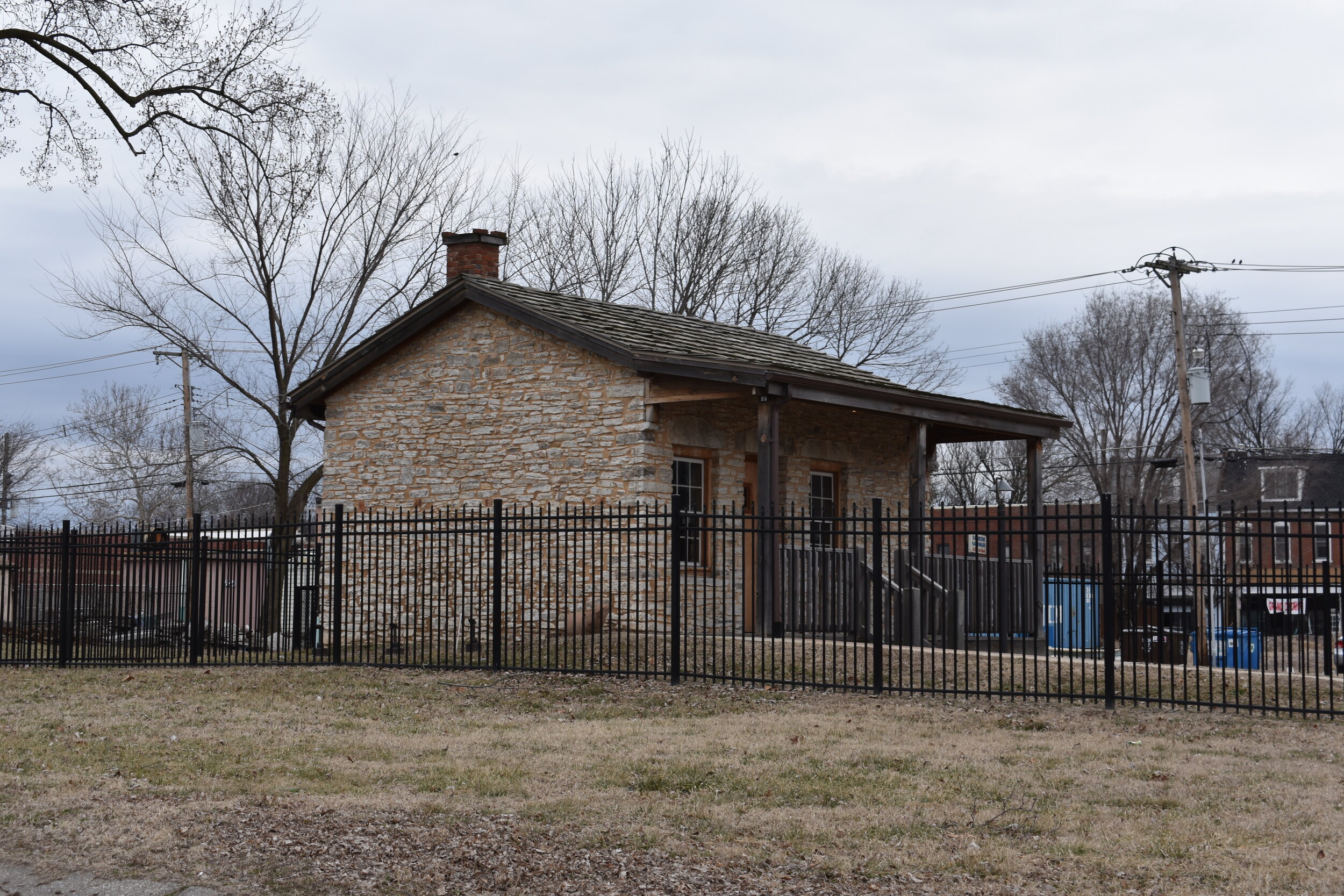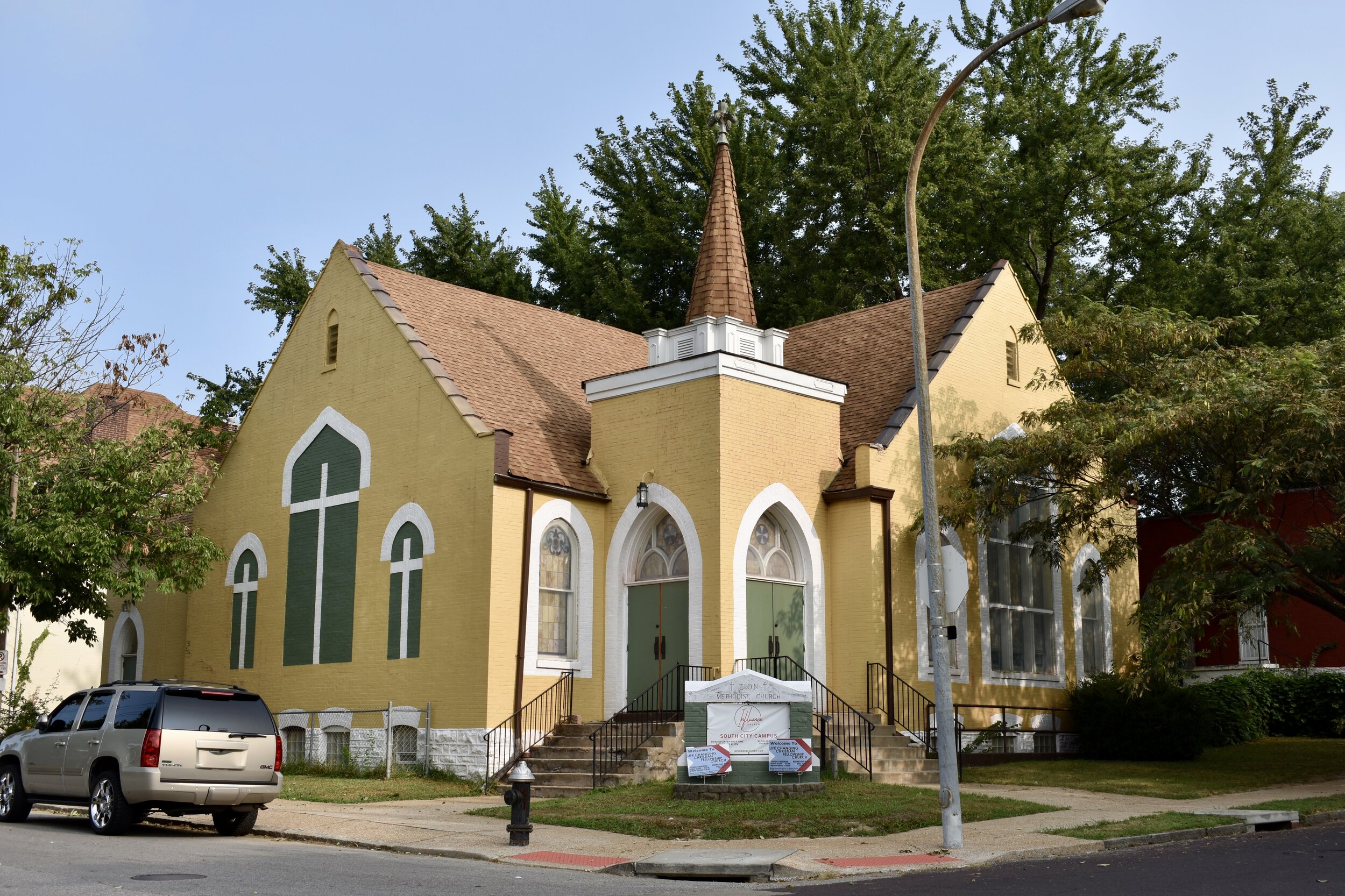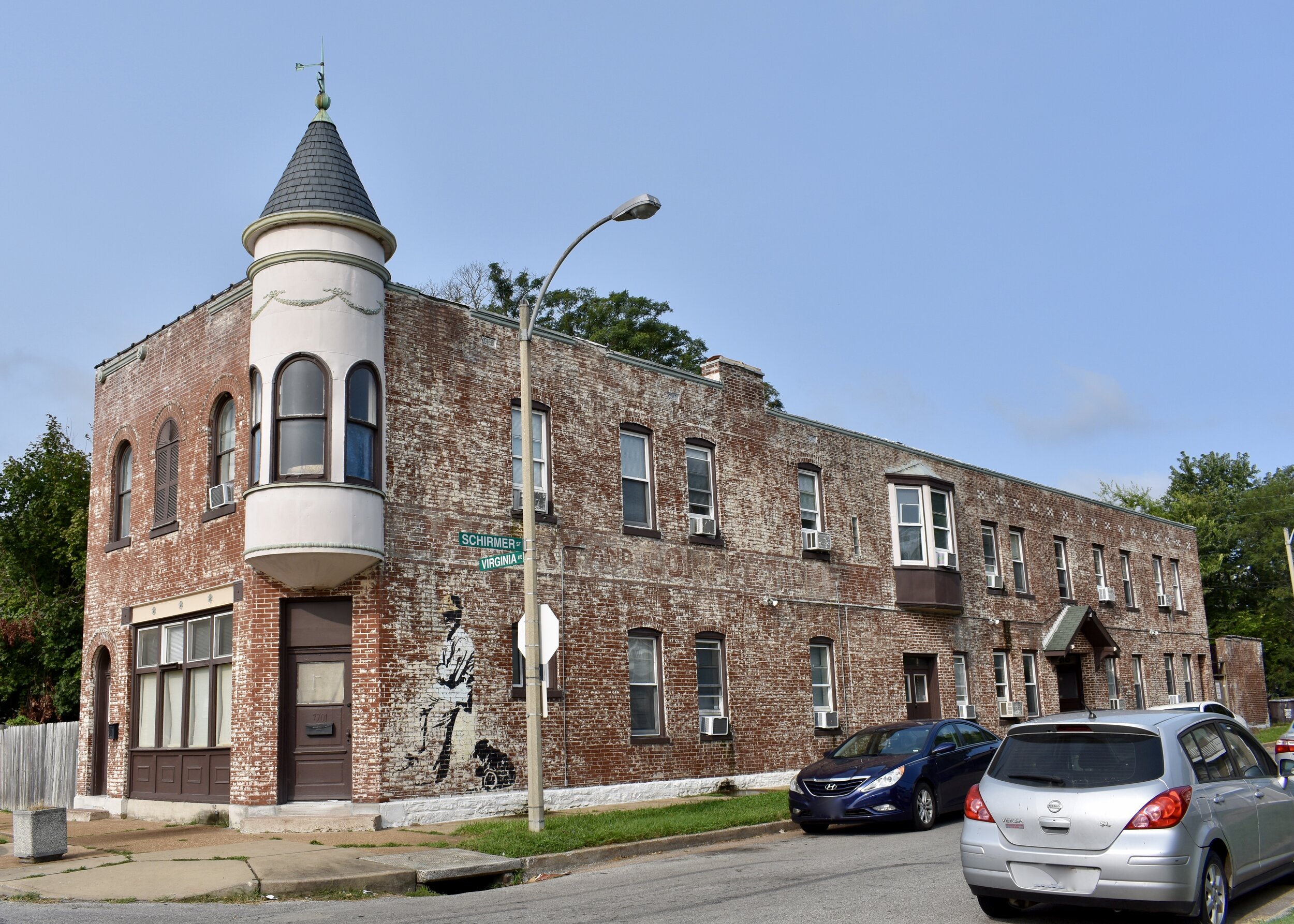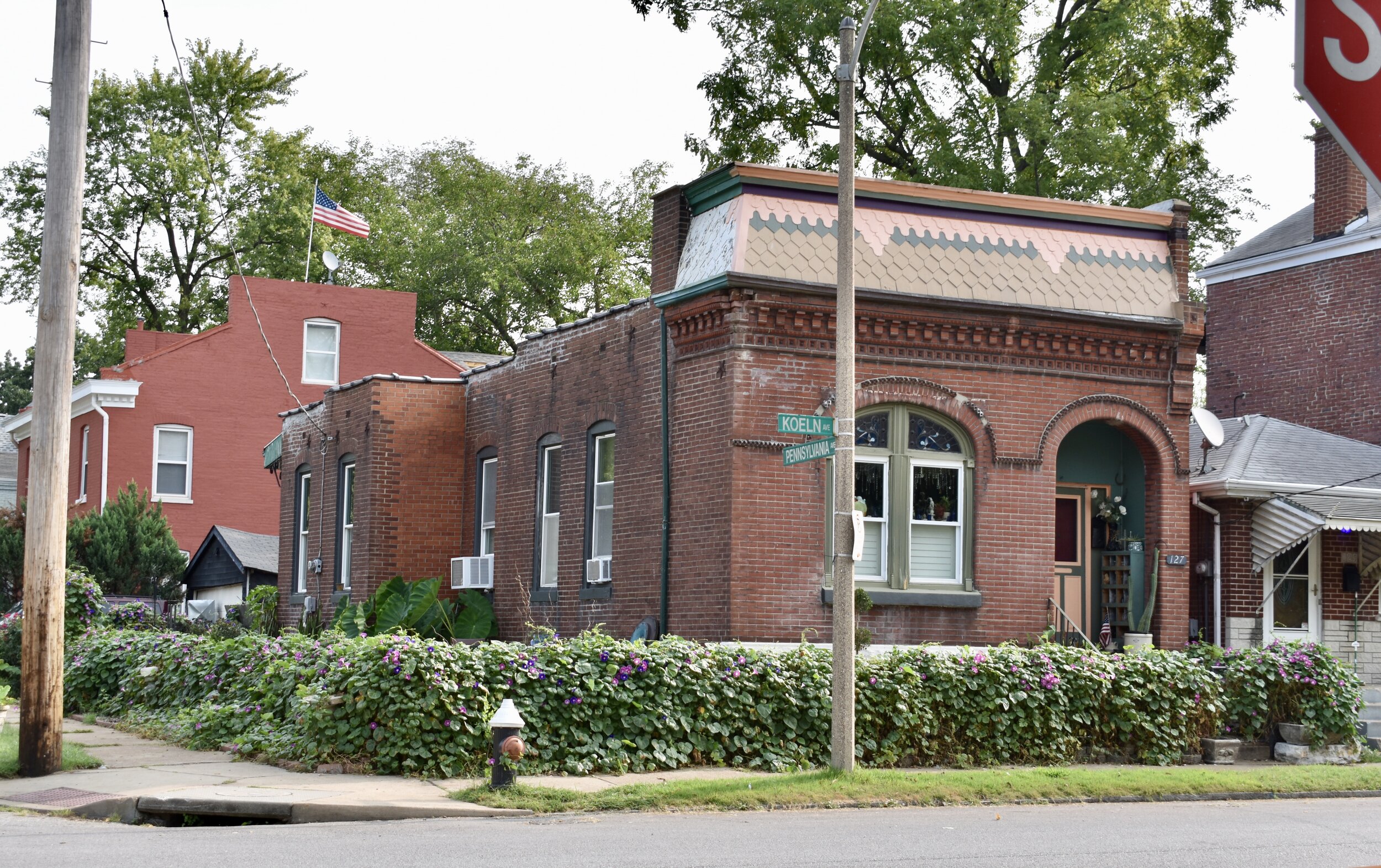The Patch neighborhood is in the southern most tip of St. Louis. It is roughly bound by the Mississippi river to the east, the city limits to the southwest, Alabama to the west and Robert on the north.
First of all I always thought this area was Carondelet. Live and learn...this is Patch, the neighborhood with the coolest name of all 79. The Patch website even claims this area to be in the most southern tip of the Carondelet neighborhood. This probably stems from the fact that Carondelet was incorporated as an independent city in 1851 and was annexed by St. Louis in 1870. It's identity is much more common than Patch. I love this neighborhood. Everyone I talked to on the street and in the businesses I entered consider this place Carondelet. No one had even heard of "Patch". This may qualify it as the most under-recognized and misunderstood neighborhood in the city.
Folks, I am always a glass half-full guy when it comes to St. Louis, and this place is teeming with soul, diversity of everything, nice people, enormous potential.
Nearly everyone that saw me with my camera wanted to talk about what I was doing. Friendly, normal people. Many told me their story about how they live there and some gave me their version of the history of the buildings. I'll get to some of these stories in a moment.
People, this is an amazing old neighborhood. There is a mix of stone, frame, brick, small, medium, large, mansions, etc. You've gotta check this neck of the woods out if you haven't already.
I read of several Civil War era stone homes in Patch. Let's start with the ones I was able to find. I'm sure I missed a few but here goes:



Interesting modern addition to the stone home above. I like it.




The above shot is from the inside of the stone structure immediately above it. See the fireplace? See the little homemade PVC pipe under the folding chair? Somebody was partying here recently...don't worry it was empty, I checked. They could have just gone down to the Crystal Wizard on Broadway to procure a proper tobacco smoking device :)
Anywho, this is a very fun place to explore. Some would call this part of town hoosier, you've probably heard that a million times before just like I have. Maybe it is, but I like that. It's not necessarily a bad thing. It's flavorful and bold. And, I like Busch beer drinkers and kids that park their homemade go carts in the front yard. I like seeing skate boarders and tattoo artists that look legit, like they earned their tattoos, like Elliott Smith, and less like the Hot Topix suburban TV versions prevalent elsewhere. Check out that fire escape on this, one of my favorite tattoo parlors in the city!


This stretch of Broadway has some of the best potential in the entire city. This could be our French Quarter a la New Orleans. I'm not the first to make these observations as the excellent writer on the website 'Dotage' did a fantastic piece on Patch back in May. I will echo most of his comments. Broadway in Patch:



Spoke to the owner of a building right behind Kathleen's Bar & Grill on the corner with the Bud sign. He said that building was built and operated by AB for years and his building (photo below) was the stable for the horses that brought the kegs of beer from the brewery. I was gushing over the architecture, he was proud too, he offered to sell me the building for $35K....

Here's another stable just west of here on Robert, according to the guys I spoke to it was a fire house (correction police station) from the mid-1800's:

Alright, I've digressed, back to Broadway in the Patch:



Firehouse #34, man you could do a coffee table book just on STL firehouses:

This cool market:


Hardware store, head shop (with eyes), and the delicious Broadway Bean cafe:


Speakin' as a child of the 70's, the 80's sucked and always will:

The coolest men's clothing store in town:

Goddamn I love it here.
There are some beautiful churches and schools in Patch:



Carondelet Baptist Church (was this really built in 1953?), that's what it says:


The church of roller derby (St. Louis Skatium):

Lyon School:


Wanna bet?:

The striking Carondelet School of 1871, now the Grace Hill Head Start for ages 3-5:

Not unlike many other St. Louis neighborhoods, Patch took a big population hit from 1990 to 2000 losing 685 residents (19%) where 2,995 residents were counted. 86% of the people counted were white, 7% black and 4% Hispanic/Latino. That's the largest number of Hispanics I've seen so far in one neighborhood. 81% of the housing is occupied, split almost exactly 50/50 owner/rent. 895 abodes are "family households", 58% married, 36% male only raising kids, 64% female only raising kids. Patch saw ~10% population loss from 2000-2010 71% of whom were white, 21% black, 4% Hispanic/Latino and 1% Asian.
The 2020 census counted 2,845, a 5% increase! 55% are white, 30% Black, 9% Hispanic/Latino, 9% 2+ races. 47 housing units were added and occupancy is 83%.
There are 3 neighborhood national historic districts listed on the Patch website. The first being Steins Steet established in 1980. The 2nd is St. Boniface established in 2002 (bound by Koeln, Tesson, Broadway and Alabama) and thirdly the Central Carondelet district establish in 2006 (Koeln, Loughborough, Broadway, Alabama) and expanded twice, once in 2007 and again in 2009.
Patch has the feel of a working class industrial neighborhood. It probably once was, and it still is to some extent, especially closest to the river where there is a lot of heavy industry.





Park space? Yes, 2 that I found:

The second I found was Fanetti Plaza, which in my opinion serves as the town center or town square. There are many restaurants, bars, bakeries, deli's, businesses I need to try. And the grand Ivory Theater.














And then there are the homes and intra-neighborhood corner buildings and businesses; quite varied as I mentioned before. I've tried to represent a cross section of what I saw:






















Enjoy the under-recognized Patch. No man, this ain't Carondelet, but everyone sure thinks it is.
Have a great weekend and enjoy this beautiful town we live in.
***In September, 2020 I revisited the neighborhood and the following includes updated commentary and photos.***
Misses On Original Tour
I waffled on whether this is Carondelet or not, historically it is, but since 1971 it has been carved out as its own neighborhood. So in the spirit of modern day accuracy, it is the Patch dammit. The locals have owned the name and continue to embrace it.
I cannot understate what a fascinating place this is. It is so old, with many buildings and homes dating back to the Civil War era. For this update, I’ve chosen to separate the neighborhood into two: east of Broadway and west of Broadway. You can have a totally different experience and vibe on each side of this main corridor. So, I’ve chosen to include lots of photos on both sides, including some buildings that were included in the original post. Instead of sprinkling in new photos within the text, I’ll add new photos below the four categories that are the recurring theme of these updates.
I’ll get to Broadway more in the Future Needs section, but it really functions as a sort of divider between the Mississippi River industrial uses to the east and the more mixed use residential section west of Broadway.
Noticeable Changes
Friends, we have an opioid and meth problem in this country. Many folks struggling with this disease as well as those taking advantage of addicts are right here in the Patch. I had run ins both respectful and not so much. For the first time in my 12 years of doing this I was told to leave because I don’t live here. I of course refused and chose to talk to these folks and let them know I had lived within a short walk of here for many years and have a right. Whatever.
Point being, lots of homelessness exists and there are lots of people wandering around in the abandoned spaces looking to score and be alone. This place has always felt a bit like a powder keg of sorts. It can go either way. There is so much positivity and good ideas happening, the bars and restaurants seem to be a bit on the edge as well. If you hang out in some of these, you’ll know what I mean. The jukebox can be playing Metallica one minute and the place has a tense vibe and another group comes in and it changes to hip hop. The vibe changes but is always slightly tense and vacillates on the regular. That feeling sticks with me here, and I’ve spent a lot of time in these parts over the years. I usually tend to be more hyper aware of my surroundings. I just get the feel everyone tolerates each other here…barely.
Lots has improved in the Patch over the last ten years. A major sidewalk, street light and ADA curb project was completed on Broadway. A modern warehouse/shipping operation called River City Business Park was built east of Broadway near the southern tip of the neighborhood. It is a massive and sits on the former Carondelet Coke plant site. While not an urban-scaled or even city-like presence, it takes up some underutilized, tough property to develop. A couple of the stone homes I showed in the original post have been rehabbed. There are new Habitat for Humanity homes that look fantastic and match the character of the original homes. The former Lyon School, designed by William B. Ittner, was built in 1910 and is currently being rehabbed into apartments. There seem to be fewer board-ups and abandoned homes, but the 2020 Census data will fact check this observation.
What Are The Future Needs?
This neighborhood can go one of two ways, it can dip into violence and disarray and erosion of dignity, or it can see business, private and public investment. For my money, this neighborhood deserves it as it can easily be a rebound neighborhood. It is the perfect place to invest and is still quite stable and signs point to the scales tipping toward positivity. It has tremendous diversity of both race and income. It is a bit of a St. Louis melting pot. If you are looking for a smaller home, or desire a shotgun floor plan, look here. The place is a treasure trove of smaller homes of all shapes and sizes, mixed in with larger ones too, of course. Mix is the key word, there isn’t a predominant feel like many other neighborhoods.
Where to start for the future? For my money: South Broadway, South Broadway, South Broadway! This commercial strip is gorgeous and in some parts is falling. This could be our Beale or Bourbon or whatever, only organic and cool/less touristy. It has the most Southern feel of all St. Louis neighborhoods, and you can imagine a thriving district that would be a National treasure if we prioritized efforts here, public and private. There are signs of both positivity and negativity over the last decade.
Broadway in the Patch, Carondelet and Baden are my three priorities to see people pull together and build something amazing for the next generations.
I hope I haven’t painted a picture of negativity here. Trust me, I’m just trying to keep it real. With that said, there is much pride in the homes here, big and small. Lots of tight knit community of the folks who’ve been here for years. The KSHE 95 hoosier vibes I got in the 1990s are fading fast, but there’s a new brand of South City to soak up. Go explore, this is one of the most fascinating and beautiful neighborhoods of all 79 St. Louis has to offer.
The stone homes and flounders alone are reasons for deep exploration.
Additional St. Louis City Talk Reading
The Temtor 8125 Michigan Avenue - July, 2011
Carondelet Lions Park - July, 2013
Fanetti Plaza - September, 2013
St. Louis Square Park - December, 2013
Kleb Clothing and Shoe Company - April, 2016
The Yachts of Carondelet - August, 2016
The St. Louis Shotgun - November, 2016
Habitat for Humanity - Carondelet and Patch Neighborhoods - December, 2018
Updated Photos - East of Broadway
Updated Photos - West of Broadway



